.
Medizinische Instrumente im antiken Griechenland
Physicians who cut, burn, stab and rack the sick, demand a fee for it which they do not deserve to get. Heraclitus
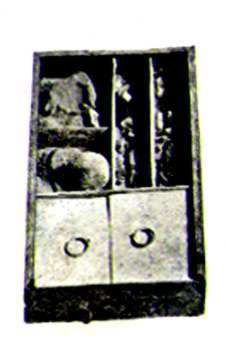
A bag of a physician with various medical instruments
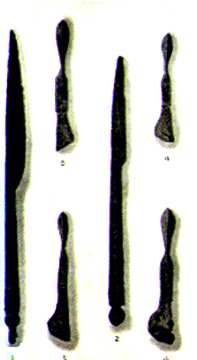
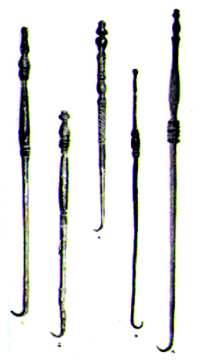
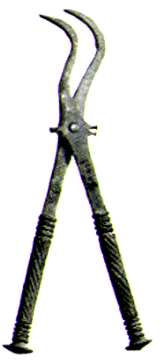

Scalpels, Hooks, a Bone Forceps and Uvula Crushing Forceps.

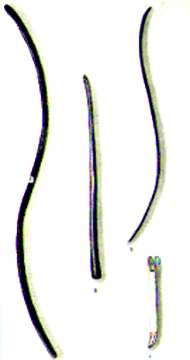
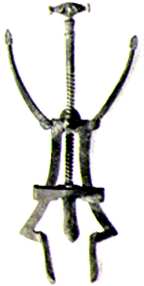
Bone Drills, Catheters (S-shaped for males, straight for females) and a Vaginal Speculum.
Instruments were used for examining injuries, for making small incisions, for gynecological examinations using the speculum and even for abortions such as described by Hippocrates. Double-level forceps were used as tooth extraction devices at least since 300 BC.
Not always instruments were available. Alexander the Great was accompanied during his expedition by physicians among which Critodemus of Cos. Some consider him as a bodyguard of Alexander but he is reported to carried out some operations in lack of medical instruments with the help of his sword.
Galen describes medical instruments used by Greeks and Romans. The medical surgical instruments were made of iron, copper or copper alloys. The instruments were used to remove stones from the bladder as described in the Hippocratic books using the forceps. The ancient Greeks inserted a hollow metal tube through the urethra into the bladder to empty it and the tube came to be known as a catheter made of copper or lead, straight for women and S-shaped for men.
Recently Greek archaeologists discovered in Abdera evidence of a skilled surgeon who practiced skull surgery centuries before Hippocrates. http://www.archaeology.org/0603/abstracts/surgery.html/
Medical instruments excavated at Abdera
Herophilos (or Herophilus) of Chalcedon (about 280 BC) is said to have constructed a portable waterclock used to measure the pulse of patients.
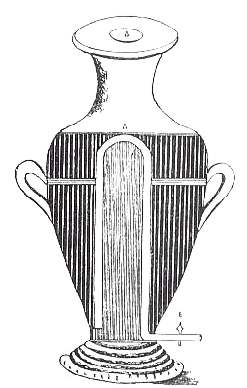
The waterclock of Herophilos (Mitteilung zur Geschichte der Medizin)
Looking at these instruments we understand why surgery has not been a popular topic in the history of medicine, perhaps because one needs a strong stomach to work even as a historian in this area. As Celsus said of the ideal surgeon, ‘Now a surgeon should be youthful, or at any rate nearer youth than old age, with a strong and steady hand that never trembles, and ready to use the left hand as well as the right; with vision sharp and clear, and spirit undaunted; filled with pity, so that he wishes to cure his patient, yet is not moved by his cries to go too fast or cut less than is necessary, but he does everything just as if the cries of pain cause him no emotion’
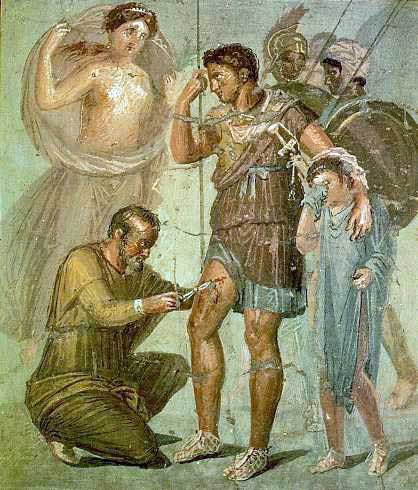
Iapyx the mythological son of Daedalus or Lycaon Aeneas' healer during the Trojan war (who escaped to Italy after the war and founded Apulia) removing an arrowhead from Aeneas thigh using a forceps. Aenas is shown with his young crying son Iulus Ascanius. Even of divine origin Iapyx is not successful and Aphrodite his mother intervenes (the woman behind Iapyx) by giving her son a herb from the island of Crete (or Asia?), dittany, to be used to heal the wound. 1st century AD Pompeii Fresco See Norman Simms, The Healing of Aeneas and Menelaus: Wound-Healers in Ancient Greek and Classical Roman Medicine
Venus as Physician: Aen. 12.411–19
Cupping vessel
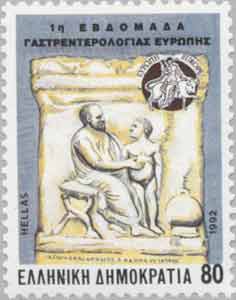
A stele of the physician Jason of Athens with the text... 'Jason, also known as Decimus, of the Archarnian deme ..., Jason examines a child, with an unnaturally enlarged stomach. To the right a cupping vessel is shown (scale exaggerated) which when heated is used to draw blood or pus from a wound. Cupping, an ancient therapy was used until the 19th century assumed to restore the balance of the body’s humours. The vessel when heated created a partial vacuum that made it stick to the body surface by suction. This raised a weal on the skin (dry cupping) or drew out blood (wet cupping) if it was set over cuts.

Votive table representing cupping and bleeding instruments from Temple of Asclepius at Athens. In centre is represented a folding case containing scalpels of various forms. On either side are cupping vessels.
Syringe
Syringe (Greek “pyulkos”, Latin “pyulcus”, i.e. “pus puller”) first description by Hero of Alexandria. The cylinder-and-pistol syringe was created by Ctesibius. Used to drain pus out of pimples, boils, and infected wounds.
The Spoon of Diokles (Diocleus cyathiscus) (κυαθίσκος του Διοκλέους )

Bernd Karger, Hubert Sudhues, Bernd Brinkmann, Arrow Wounds: Major Stimulus in the History of Surgery, World Journal of Surgery 25, Number 12 2001 , 1550 - 1555, Springer (PDF File for subscribers)
Diokles (or Diocles) of Carystus (Διοκλής ο Καρύστιος) ( fl. 360-330 BC)
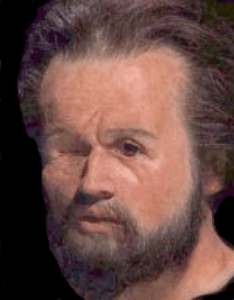
Reconstruction of Philip II, the father of Alexander the Great, from the skull found by Manolis Andronikos. Philip II lost his right eye hit by an arrow during a battle (18 years later he was killed at the wedding of his daughter Cleopatra).
According to Pliny the Elder Philip’s surgeon Kritoboulos, prevented the serious disfiguring of the king’s face after Philip of Macedon lost his eye in the Siege of Methone. He used a specialized surgical instrument for removal of arrows, known as “the spoon of Diokles” after its inventor Diocles of Carystus, a student of Aristotle.
But take me safely back to my black ship,
cut the arrow from my thigh, and with warm water
wash away the black blood there, then rub on
fine soothing medication, whose use, they say,
Achilles taught you, an art he learned
from Chiron, most righteous of the Centaurs.
Iliad Book 11
Arrow-Wounds.--According to Otis the illustrious Baron Percy was wont to declare that military surgery had its origin in the treatment of wounds inflicted by darts and arrows; he used to quote Book XI of the Iliad in behalf of his belief, and to cite the cases of the patients of Chiron and Machaon, Menelaus and Philoctetes, and Eurypiles, treated by Patroclus; he was even tempted to believe with Sextus that the name iatros, medicus, was derived from ios, which in the older times signified "sagitta," and that the earliest function of our professional ancestors was the extraction of arrows and darts. An instrument called beluleum was invented during the long Peloponnesian War, over four hundred years before the Christian era. It was a rude extracting-forceps, and was used by Hippocrates in the many campaigns in which he served. His immediate successor, Diocles, invented a complicated instrument for extracting foreign bodies, called graphiscos, which consisted of a canula with hooks. Otis states that it was not until the wars of Augustus that Heras of Cappadocia designed the famous duck-bill forceps which, with every conceivable modification, has continued in use until our time. Celsus instructs that in extracting arrow-heads the entrance-wound should be dilated, the barb of the arrow-head crushed by strong pliers, or protected between the edges of a split reed, and thus withdrawn without laceration of the soft parts. According to the same authority, Paulus Aegineta also treated fully of wounds by arrow-heads, and described a method used in his time to remove firmly-impacted arrows. Albucasius and others of the Arabian school did little or nothing toward aiding our knowledge of the means of extracting foreign bodies. After the fourteenth century the attention of surgeons was directed to wounds from projectiles impelled by gunpowder. In the sixteenth century arrows were still considerably used in warfare, and we find Pare a delineating the treatment of this class of injuries with the sovereign good sense that characterized his writings. As the use of firearms became prevalent the literature of wounds from arrows became meager, and the report of an instance in the present day is very rare.
Anomalies and Curiosities of Medicine by George M. Gould and Walter L. Pyle
Various volumes in the Corpus Hippocrates had relevance to Orthopedics. One such volume is the one on joints. Here dislocation of the shoulder was described together with the various methods used in reduction. There were also sections describing the reduction of acromioclavicular, temporomandibular, knee, and hip and elbow joint dislocations. The correction of clubfoot was described. The problem of infection after compound fractures was described and treated with pitch cerate and wine compresses without forcible bandaging. Probing into any compound fracture was avoided.
- Hippocrates had a thorough understanding of fractures. He knew of the principles of traction and counter-traction. He developed special splints for fractures of the tibia, similar to external fixation. Hippocrates also developed the Hippocratic bench or scamnum. Of all the developments that Hippocrates has given to us, his careful clinical observation and rationale thinking must be particularly commended.
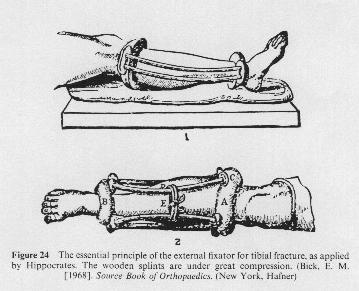
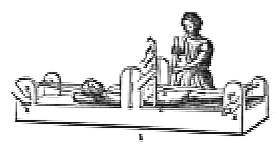

Hippocratic treatment of spine injuries—the rack system and the technique of using gravity to straighten the spine. From Hippocrates: The Genuine Works of Hippocrates (translated by Adams F). London: Sydenham Society, 1844, Vol 2.
The so-called Hippocratic bench or scamnum was converted from a healing device later into a torture device, the rack. (On Joints)
References
John Stewart Milne Surgical Instruments in Greek and Roman Times. Claredon Press: Oxford, 1907
Celsus’ de Medicina is essentially a Latin translation of a Greek text by Aufidius, a Sicilian; Farrington 1949 p. 127.
J. G. Milne, Surgical Instruments in Greek & Roman Times, Ares Publishers, Inc. 1991
Keith Wilbur, Antique Medical Instruments, Schiffer Pub Ltd; Revised edition, 1993
Elisabeth Bennion, Antique Medical Instruments, Univ of California 1979
| Ancient Greece
Science, Technology , Medicine , Warfare, , Biographies , Life , Cities/Places/Maps , Arts , Literature , Philosophy ,Olympics, Mythology , History , Images Medieval Greece / Byzantine Empire Science, Technology, Arts, , Warfare , Literature, Biographies, Icons, History Modern Greece Cities, Islands, Regions, Fauna/Flora ,Biographies , History , Warfare, Science/Technology, Literature, Music , Arts , Film/Actors , Sport , Fashion --- |

